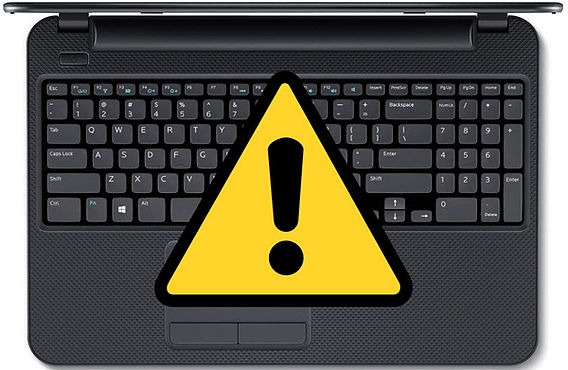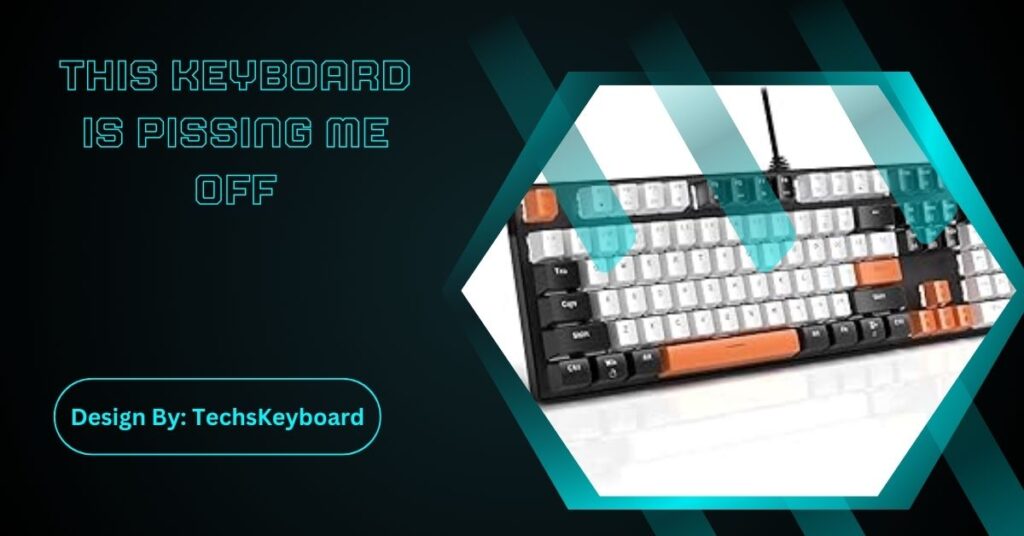Keyboard frustrations like sticky keys, poor ergonomics, and lag disrupt productivity. Most issues, such as debris, driver glitches, or connectivity, have simple fixes. Discover tips to troubleshoot and improve your typing experience.
We’ve all been there. You’re in the middle of an important email, a gaming session, or a work deadline, and your keyboard decides it has other plans. Maybe the keys stick, the layout feels wrong, or you’re just not typing as smoothly as you’d like. Whatever the issue, you’re left thinking, “This keyboard is pissing me off!”
The good news? Most keyboard problems have simple solutions. This guide will explore common frustrations, why they happen, and how to fix or avoid them altogether. And, if all else fails, we’ll discuss what to look for when choosing a new keyboard that won’t drive you to the brink of madness.
Common Keyboard Frustrations:
Keyboards are essential tools, but they can quickly become a major annoyance when they don’t work as expected. Here are some of the most common issues people face with their keyboards:
1. Sticky or Unresponsive Keys
One of the most aggravating experiences is pressing a key and either having it stick, double-type, or not work at all. This happens often due to dust, debris, or wear and tear on the switches.
2. Poor Ergonomics
An uncomfortable keyboard can lead to wrist pain, finger fatigue, or even long-term issues like carpal tunnel syndrome. Small keyboards, wrong key placements, or lack of wrist support can all contribute to discomfort.
3. Random Keystrokes or Input Lag
Typing something only to see letters appear seconds later—or random unintended keystrokes appearing—can be incredibly frustrating. This is often caused by connectivity issues for wireless keyboards or software glitches with drivers.
4. Unintuitive Layouts
Adjusting to a new keyboard layout can be disorienting. Whether it’s a smaller laptop keyboard, a mechanical board with weird symbols, or a “compact” design, the change can disrupt your flow.
5. Keys Wearing Out Quickly
Cheaply made keyboards often come with keys that wear out fast—letters fade, the texture becomes smooth, or the entire keycap falls off unexpectedly.
6. Loud Typing Noise
While some people love the satisfying click of a mechanical keyboard, others find loud keys grating—especially in shared or quiet spaces like an office or library.
7. Connectivity Issues
Wireless keyboards occasionally disconnect from their device, or wired ones might suffer from damaged cables. These interruptions can derail productivity and test your patience.
8. Dust and Dirt Buildup
Keyboards are magnets for crumbs, dust, and pet hair. A cluttered keyboard doesn’t just look bad—it can impact performance too, causing keys to stick or become unresponsive.
Now that we’ve identified the culprits, let’s talk about solutions.
How to Fix Common Keyboard Issues?

Sticky or Unresponsive Keys
- Quick Fix: Remove the affected key and clean underneath it using a can of compressed air or a soft brush. For sticky residue, use a cotton swab dipped in isopropyl alcohol.
- Long-Term Solution: Invest in a mechanical keyboard if you type a lot. Mechanical keys are more durable and easier to clean than membrane ones.
Poor Ergonomics
- Quick Fix: Adjust your typing position. Keep your wrists straight, elbows at a 90-degree angle, and wrists resting lightly on a cushioned pad if needed.
- Long-Term Solution: Consider buying an ergonomic keyboard with features like split layouts, wrist rests, or tiltable designs. Models like the Microsoft Sculpt or Logitech Ergo series can reduce strain.
Random Keystrokes or Input Lag
- Quick Fix: Restart your keyboard connection. For wireless models, try re-pairing via Bluetooth. For wired ones, ensure the USB port is functional.
- Long-Term Solution: Update your keyboard drivers or firmware. Check the manufacturer’s website for the latest versions.
Unintuitive Layouts
- Quick Fix: Practice! Spend some time with your new keyboard and consider using typing tutorials to adapt faster.
- Long-Term Solution: Opt for keyboards with standard layouts when making a purchase. Familiar designs are less disruptive.
Keys Wearing Out Quickly
- Quick Fix: Replace individual keycaps if possible. Many keyboard brands sell replacements.
- Long-Term Solution: Invest in a higher-quality keyboard with PBT keycaps, which are more durable and resistant to wear than ABS plastic.
Loud Typing Noise
- Quick Fix: Place O-rings (small rubber dampeners) on the stems of mechanical keys to reduce noise. Alternatively, switch to quieter switches like Cherry MX Silent or membrane-based keyboards.
- Long-Term Solution: Avoid mechanical keyboards if sound is an issue, and look for low-profile, quiet models like the Logitech MX Keys.
Connectivity Issues
- Quick Fix: Replace batteries in wireless keyboards, reposition to eliminate signal interference, or try a different USB port or cable.
- Long-Term Solution: If connectivity problems persist, consider upgrading to a keyboard with more reliable tech, like a unifying receiver or Bluetooth 5.0.
Dust and Dirt Buildup
- Quick Fix: Use compressed air weekly to blow out dust. Consider a soft silicone cover as a preventative measure.
- Long-Term Solution: Regularly clean your keyboard (especially if you eat at your desk) and store it properly when not in use.
Tips to Improve Typing Comfort:
Typing doesn’t have to be uncomfortable or frustrating. Here are some tips to make your keyboard experience smoother and less irksome:
- Maintain Proper Posture: Sit upright and ensure your keyboard is at elbow height.
- Invest in a Good Chair and Desk: Adjustable desks and chairs can improve comfort immensely.
- Use Typing Gloves or Wrist Supports: These can provide extra cushioning for long typing sessions.
- Experiment with Different Keyboard Types: Try mechanical, membrane, ergonomic, or hybrid keyboards to find what suits you.
- Lubricate Your Switches: Mechanical keyboard users can lube their switches to improve movement and reduce noise.
Also Read: Where Are Keyboard Shortcutsd In Termux Listed
How to Choose the Right Keyboard?
When your old keyboard has pushed you to your limit, it might be time for an upgrade. Here’s what to consider when shopping for a new one:
1. Purpose
- Are you a gamer? Look for keyboards with programmable keys and fast response rates.
- Are you a writer? Choose mechanical keyboards with tactile switches for accuracy.
- For office use, quieter models are ideal.
2. Connectivity
- Choose wireless for flexibility and portability.
- Stick to wired for reliability and lower input lag.
3. Switches
- Mechanical switches offer durability and a premium feel, but they’re often noisier.
- Membrane keyboards are quieter and cost-effective but less durable.
- The best features of both worlds are combined in hybrid switches.
4. Ergonomics
- Look for split keyboards or designs with built-in wrist rests if comfort is a priority.
5. Build Quality
- Aluminum builds are sturdier, while plastic ones are lightweight and affordable.
FAQs:
1. Why do my keyboard keys stick or not respond?
Sticky or unresponsive keys are usually caused by dust, debris, or spilled substances. Cleaning under the affected keys or using compressed air often resolves the issue easily.
2. How can I improve typing ergonomics with my keyboard?
Maintain a proper typing posture with wrists straight and elbows at 90 degrees. Use a cushioned wrist rest or invest in an ergonomic keyboard for better long-term comfort.
3. What causes random keystrokes or input lag on my keyboard?
Random input or delays may result from connectivity issues in wireless keyboards or outdated drivers. Re-pairing the device, checking ports, or updating drivers can fix the problem.
4. Can loud typing noises be reduced without changing keyboards?
Yes, O-rings or dampening tools can be added to mechanical keyboards to reduce typing noise. Switching to quieter switches also minimizes sound, offering a low-noise solution.
5. How do I prevent dust and dirt from affecting my keyboard?
Regular cleaning with compressed air and using a silicone keyboard cover helps keep dust and debris out. Cleaning weekly ensures long-lasting performance and avoids sticky or stuck keys.
Conclusion:
Keyboard troubles can be infuriating, but with simple fixes like cleaning, adjusting ergonomics, or troubleshooting drivers, you can regain functionality and comfort. If persistent issues arise, investing in a durable, ergonomic keyboard aligned with your needs is worthwhile. Taking time to maintain your keyboard and ensuring a comfortable setup enhances the typing experience while reducing frustration. With these strategies, your keyboard can become a reliable tool once again.


